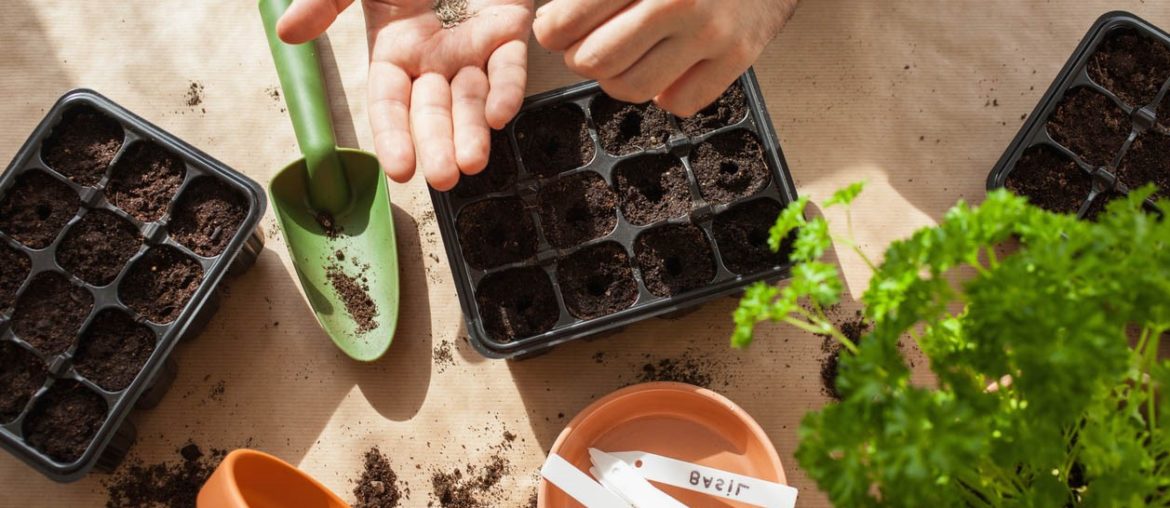This mode of reproduction is commonly used for the multiplication of balcony and terrace plants.
Requirements for cuttings
Although cuttings are one of the easiest methods of propagation, it nevertheless requires the application of certain rules.
Since the time of cuttings largely determines the subsequent development of the cuttings, it is important that the operation be carried out at the right time.
Thus, for the species of the genus Chrysanthemumy, the subjects presenting the strongest development must be cuttings at the beginning of winter, while those with small and medium growth must be cut only during spring, normal period. cuttings for most plants grown in the open air, therefore for terrace plants and, sometimes, for balcony plants.
If sterile culture media cannot be used – river sand, for example – we will choose cuttings for very porous earthy mixtures, containing 25 to 50% sand.
These mixtures must be kept constantly wet ; rooting of cuttings will be favored if peat dust is added to the soil.
Main categories of cuttings
One distinguishes in particular: cuttings of leafy branches, cuttings of leaves and cuttings of roots.
Leafy twig cuttings
Cuttings from non-leafy woody twigs is the exception. In fact, cuttings are almost always made from leafy twigs, or even from completely herbaceous twigs, especially for species of the genus Iresine.
In other cases, the cuttings should be done with leafy twigs. partially lignified at the base, in particular for species of the genera Azalea, Calceolaria and Ficus.
Leaf cuttings
In some species placed under conditions favorable to the emission of rootlets, the leaves may emit buds more or less numerous. This is the case with most plants belonging to the Crassulaceae family. The leaf cuttings is a delicate operation. To succeed and avoid the risk of rotting, we will place the leaves to cut in a perfectly healthy multiplication soil, also the sand or the earthy mixture of this soil must first be sterilized in boiling water.
Root cuttings
Various species have a root system that can emit twigs; this is particularly the case of some hardy perennials of the genera Anemone, Dicentra and Phlox.
For carry out root cuttings, it is necessary first of all topull out the mother stumps, of clean them and of wash them. The roots must, then, be cut into sections of a few centimeters and be dispersed on the propagation soil, then be covered with several centimeters of strongly sandy earthy mixture.
Root cuttings should be prepared at the end of summer, which allows them to emit twigs the following spring, after rooting. Their nursery setting then prevails until autumn, so that they can acquire sufficient development before the end of the first vegetative cycle.

Practice of cuttings
The cuttings should be done as follows, using a sharp knife or, better, a graft or a pruning knife:
· Carry out the sectioning of the cuttings a few centimeters above or below an eye depending on whether you are at the top or the bottom of the cutting. In some cases, the cutting may be crowned
through a terminal eye, only one sectioning is performed for its removal from the parent strain. This is the case for cuttings made with terminal branches (for example: herbaceous plants).
· Give cuttings length allowing to keep three or four leaves in the case of species with a large gap between nodes; leave a length of 6 to 12 cm for species whose branch nodes are closer together.
· Reduce the surface of the leaves that are on the cuttings cutting each leaf horizontally about a third of the way up. This practice prevents excessive sweating before rooting the cuttings.
If these are species that leak a latex, immerse the base of the cut part of the cutting in water or let it drain naturally for twenty-four hours, then wipe it off before placing it in the ground. The latex, in fact, by coagulating, forms a layer which opposes the emission of rootlets. · Keep, as appropriate, when removing the cuttings from the parent strain latex: either a small lignified fragment, a few millimeters in size, on either side of the cutting. In this case, it is a cutting referred to as a crossette cutting; – or a small portion of, tuber comprising the shoots constituting the cuttings, in the case of tuberous or tuberculous plants (tuberous begonia, dahlia, for example). In many cases, there is nothing to prevent the cutting from being reduced to a single bud matched with the leaf at the base of which it is placed.
· Drive the cuttings 2 to 3 cm into the propagation soil, so that the emission of adventitious roots can take place in a limited space, which thus makes it possible to obtain a vigorous scalp.
· Carry out permanent planting of cuttings using a dibble, so that the open hole allows the upper roots to sink 1 to 2 cm into the ground and that the entire hair is neither crushed nor floating after the boundary.
Operations resulting from cuttings
As for sowing, the cuttings can give rise, after emission of the roots, to one or more transplants for species that take root quickly this makes it possible to obtain more vigorous subjects during permanent planting. Avoid transplanting cuttings from species that root with difficulty, the momentary interruption of the emission of rootlets can cause the failure of the cuttings. This is the case for species of the genus Daphne and for a certain number of those of the Conifer family.
Read also :









